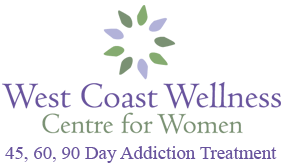Heroin addiction is a very serious problem. It can spiral out of control rapidly and lead to poor life choices that lead to jails, institutions and death. Heroin is classified as an opiate. There is a fentanyl crisis in Vancouver and across Canada right now. How does fentanyl concern heroin?
Heroin Related Overdoses are on the Rise – Frequently Contaminated With Much Stronger Opiates
Heroin often contains fentanyl and carfentanil. These are very, very strong opiates. The number of fentanyl, carfentanil overdoses is alarming. People overdose when these opiates are mixed in and they are unaware. When someone does their usual (or even first time) dose there is always a risk.
What Kind of a Drug is Heroin and Why do People Abuse It?
Heroin is a psychoactive (mind-altering) drug that affects the way people think, feel and behave. It is a depressant that slows down breathing, heart rate, thoughts and actions. It can lead to poor judgment, reasoning and the inability to function in the real world.
Heroin provides a potent but short-lasting euphoria. It is made from the chemical processing of morphine. Morphine is a drug derived from the opium poppy plant. It was originally manufactured as a pain medication. Heroin is an extremely addictive pain killer.
Heroin in Canada is Often Contaminated With Strong Opiates Like Fentnayl and Carfentanil – Overdoses are on the Rise
Most of the heroin in Canada today comes from uncontrolled labs. This is dangerous. Users never know what they are consuming. Heroin is incredibly powerful. Street-sourced heroin is often made from or contaminated with other, stronger opiates as explained above.
Lack of skill, equipment, imprecise measurements and handling of stronger opiates frequently contaminates batches of heroin. Sometimes purposefully mixed in as fentanyl and carfentanil are cheaper. Some by accident. Overdose is extremely likely.
Several hundred people have died from opiate overdose in Vancouver in 2016 – it was the highest number of overdose deaths on record.
Heroin Addiction Symptoms – Behavioral, Psychological and Physical
Heroin addiction has several behavioral symptoms that develop over time. Be aware of these symptoms. Know when to seek help for yourself or someone you know.
When using heroin, the drug often becomes the centre of the addict’s life. For this reason, there are noticeable changes in lifestyle. Often, despite the many problems heroin causes, a person who is in the grip of addiction will continue to prioritize the drug over important obligations and relationships. Even if the drug is causing them and others around them to suffer…
The following are some typical behavioral changes that that can alert concerned individuals that there is a problem:
Presence of drug paraphernalia: blue rubber bands, needles, small metal caps, small baggies, small paper “flaps”, bent or blackened spoons, rolled up bills, small pieces of cotton, citric acid packets, oddly scattered straws, alcohol wipes, small balloons, blackened tin foil
Changes in behaviour: defensive, seems like they are hiding something, new group of friends, hanging out in unsavoury part of town, waking up later to be up at night, gone for hours and hours and lies about where they have been, withdrawn, nodding off at odd times (saying it is narcolepsy), confusion, can’t hold a conversation, forgetfulness, say things that don’t make sense, complain about others yet they keep putting themselves in the same situation with the same people (others that do druugs)
Changes in behaviour related to withdrawal: agitation, severe restlessness, anger, rage, irritation, impatience, “sped up”, depression, inability to keep appointments, responsibilities and obligations are dropped (swapped for heroin as that is the number one priority), slurred or slow speech
Changes in the body: “Track marks” (usually hands, forearms, inner arm), red dots on legs, pinned pupils, blue lips or fingers (can indicate overdose – call 911 if unsure), diarrhea, flatulence, insomnia, weight loss (lack of appetite), bruises, abscesses, cuts, scrapes, gashes, frequent infections (MRSA, staph), scabies, bed bug and cockroach bites, dark circles (from lack of sleep)
Changes in appearance: bending up and down – side to side, swinging arms (high), bent knees when standing (and hunched over), stained or dirty clothing, clothing that doesn’t fit, lack of awareness about how they look, poor hygiene (not showering, not brushing teeth, not using deodorant), pale skin (no vibrancy or glow), missing teeth, tooth decay, tooth pain, white film on tongue (yeast)
Use of street names, slang, nick names related to heroin: h, down, dope, smack, dragon, junk
Missing valuables or money: rearranged belongings or moved to a different area, needs more money because they were robbed (but really for a drug debt or because they “missed” or got ripped off)
Legal troubles: run-ins with Police, increased amount of tickets and fines
Reach out for Support – Contact Us for Heroin Addiction Help or Help With Another Substance
Our staff are professional and compassionate. We are ready to assist you, a loved one or someone you know with their heroin addiction or addiction to another drug. Please note, we are a treatment centre for women. Help is only a click or call away. 1-800-801-8354.


Leave A Comment
You must be logged in to post a comment.